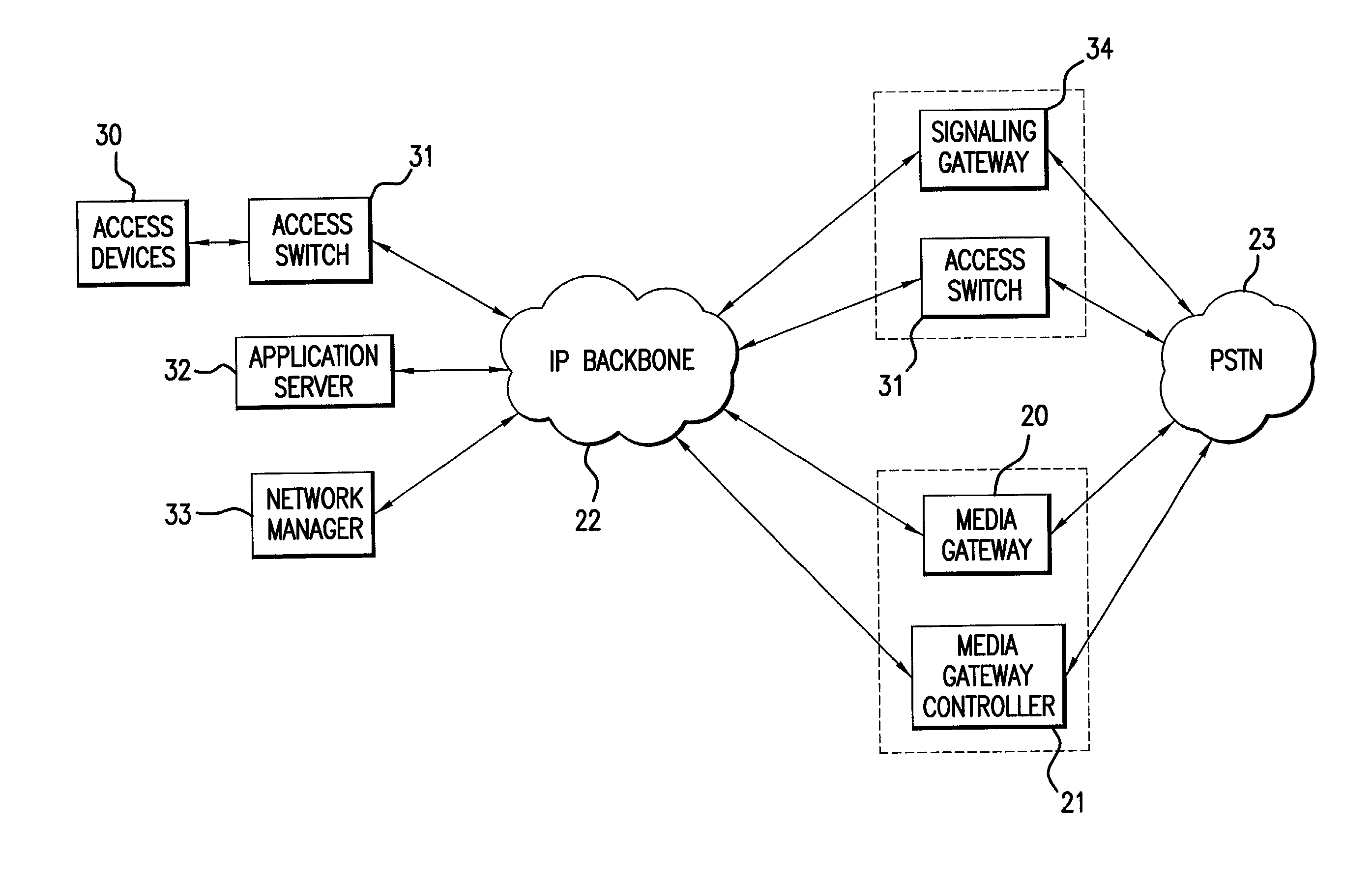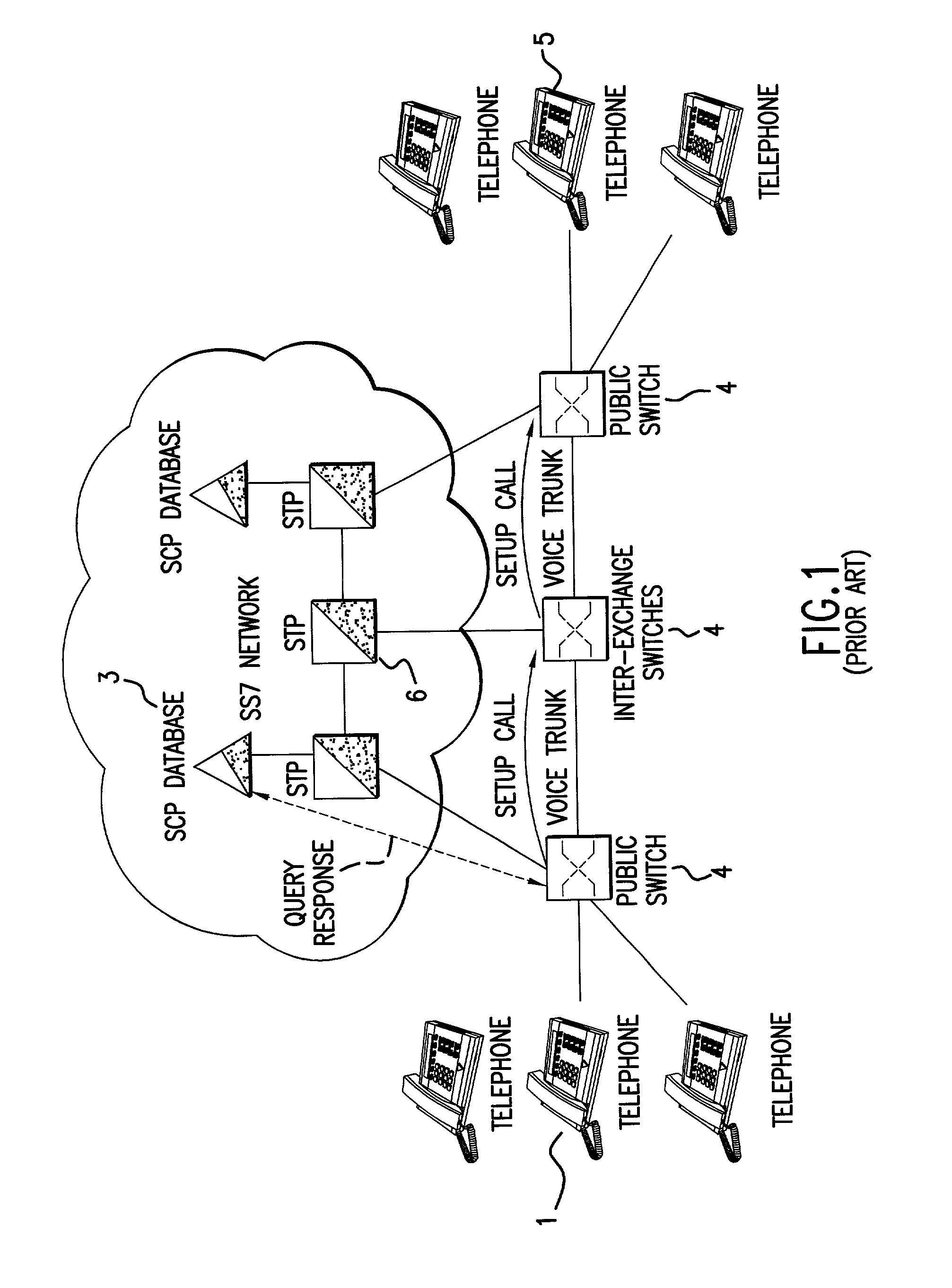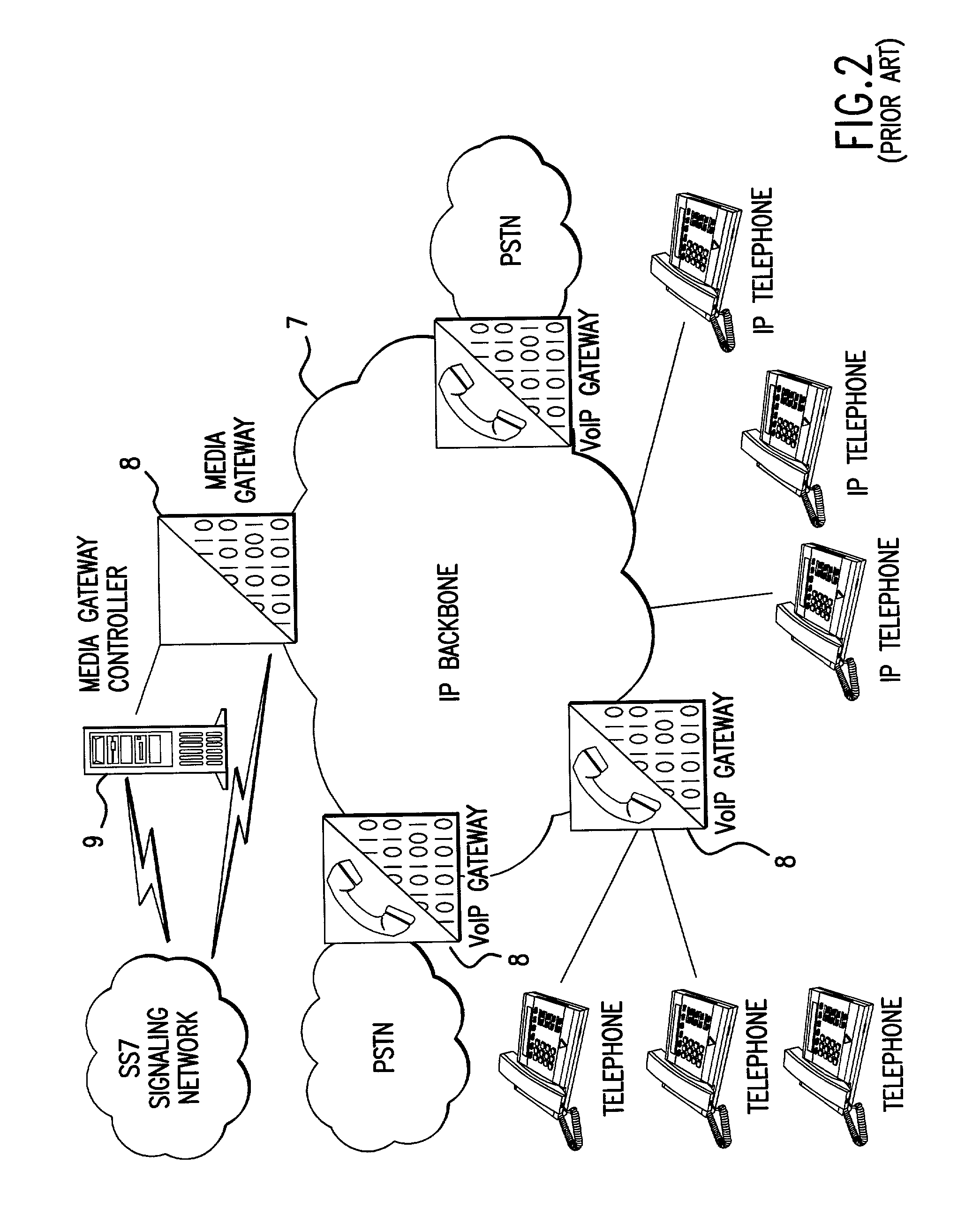Voice over IP architecture
a voice over internet protocol and voice technology, applied in the field of telecommunications system architectures, can solve the problems of increasing the cost of voice services in the telecommunications market, the cost of developing voice service networks, and the inability to meet the needs of voice services
- Summary
- Abstract
- Description
- Claims
- Application Information
AI Technical Summary
Problems solved by technology
Method used
Image
Examples
Embodiment Construction
[0081] Conventional VoIP architectures are largely based on two elements, the Media Gateway Controller (MGC), sometimes referred to as a softswitch, and the Media Gateway (MG), also referred to as a trunking gateway. FIG. 5 illustrates the relationship of Media Gateway 20 and the Media Gateway Controller 21 as components bridging a VoIP network 22 and the PSTN 23. The functional roles of these two components have previously been described. In short, the combination of a MG and a MGC can be used to move packetized payload and signaling data between VoIP network 22 and PSTN 23. Media Gateway 20 can be used to convert packetized voice data into TDM voice for transmission over the PSTN. Media Gateway Controller 21 can be used both to control operation of Media Gateway 20 and inter-operate with the signaling components of the PSTN.
[0082] Unfortunately, the conventional combination of a MG and a MGC suffers from a number of difficulties, including poor (or weak) signaling protocols, and s...
PUM
 Login to View More
Login to View More Abstract
Description
Claims
Application Information
 Login to View More
Login to View More - R&D
- Intellectual Property
- Life Sciences
- Materials
- Tech Scout
- Unparalleled Data Quality
- Higher Quality Content
- 60% Fewer Hallucinations
Browse by: Latest US Patents, China's latest patents, Technical Efficacy Thesaurus, Application Domain, Technology Topic, Popular Technical Reports.
© 2025 PatSnap. All rights reserved.Legal|Privacy policy|Modern Slavery Act Transparency Statement|Sitemap|About US| Contact US: help@patsnap.com



